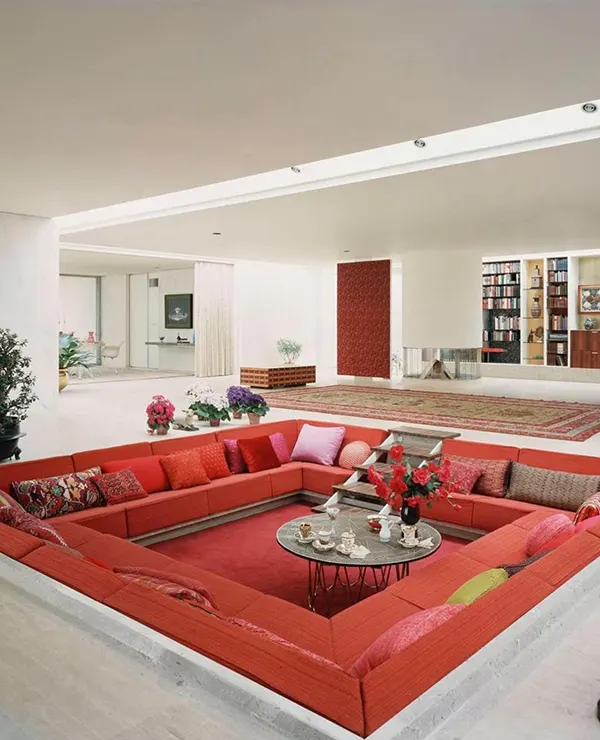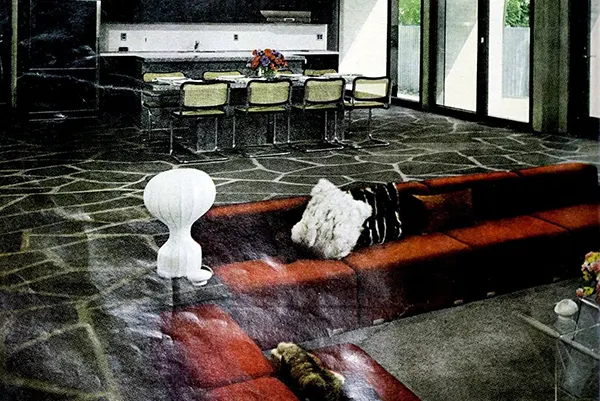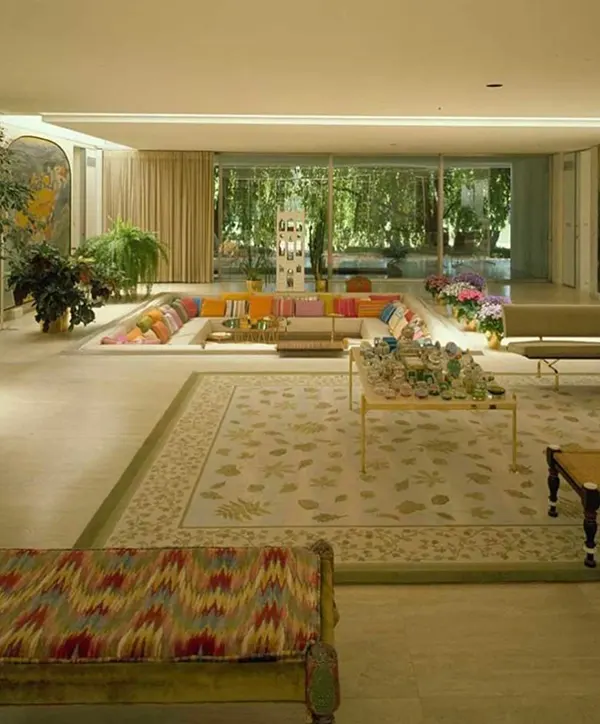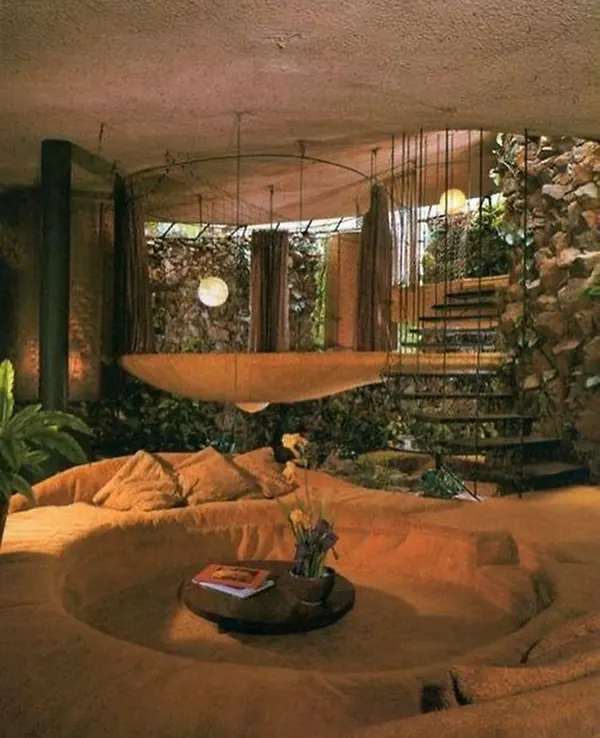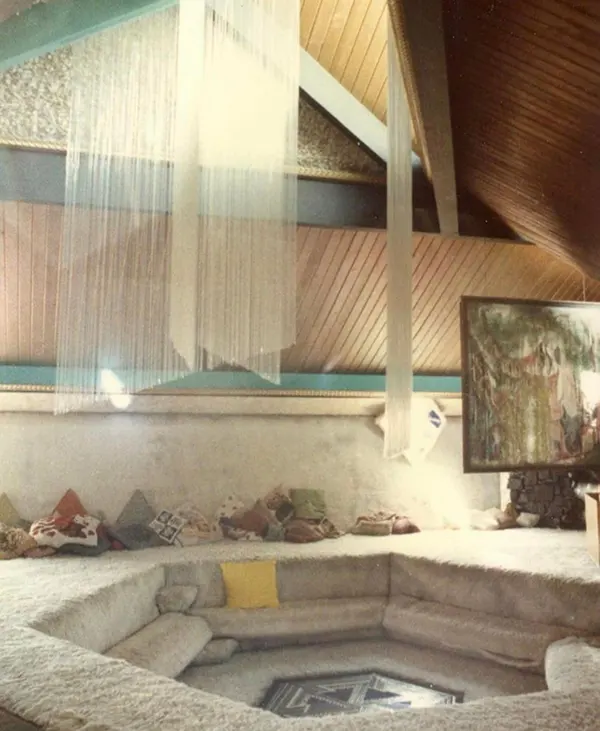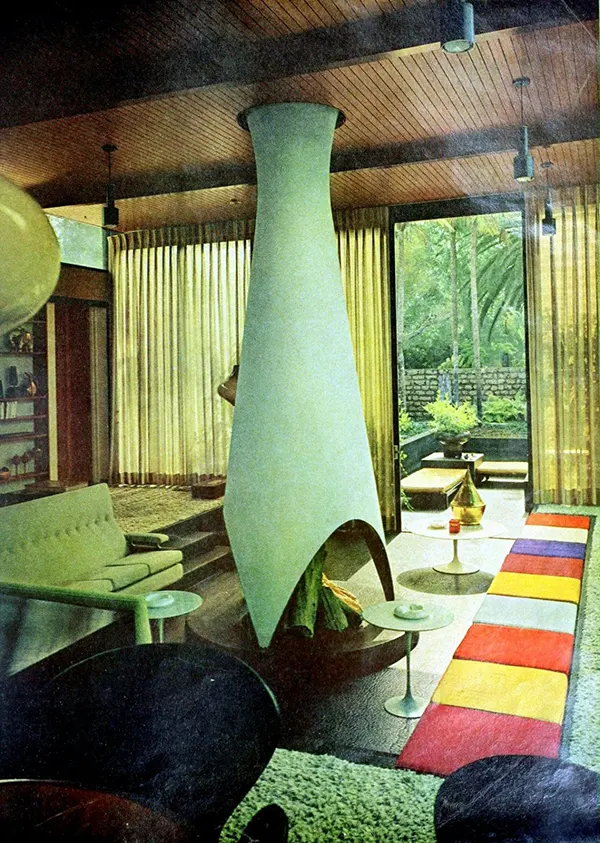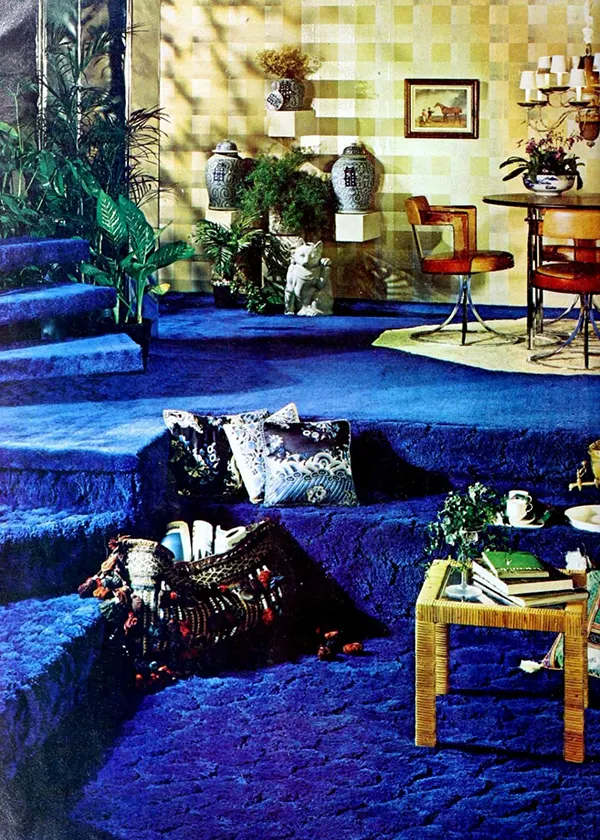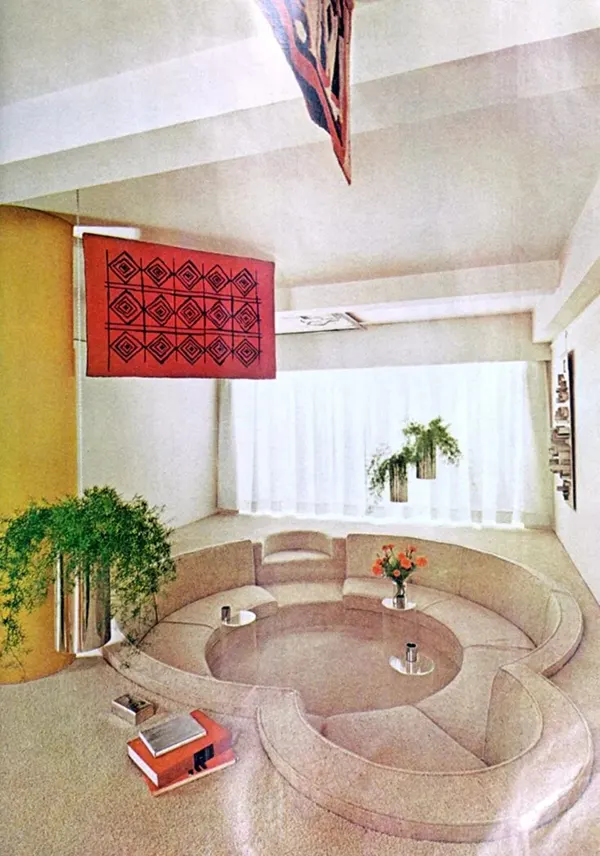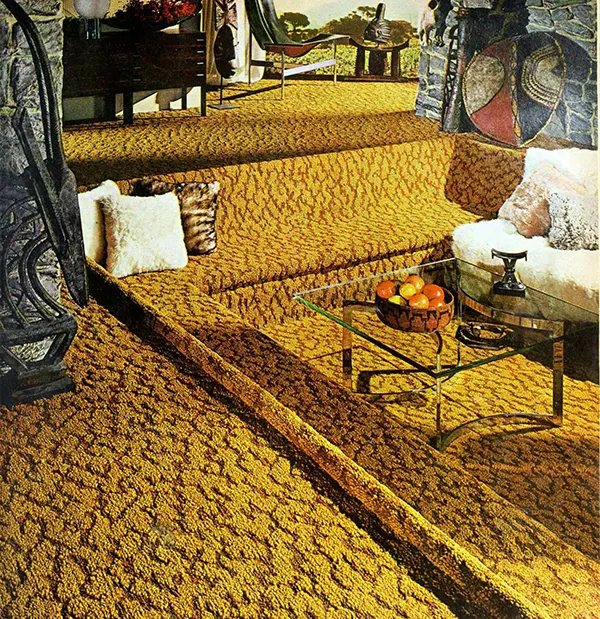The pits initially gained popularity in the 1950s and 1960s, but the 1970s is the period most closely associated with the design. A conversation pit is an architectural feature that incorporates built-in seating into a depressed section of flooring within a larger room. This area often has a table in the center as well. The seats typically face each other in a centrally focused fashion, bringing the occupants closer together than free-standing tables and chairs normally would. In residential design, this proximity facilitates comfortable human conversation, dinner parties, and tabletop games. Their disadvantages include accidental falls and uncomfortable interactions with those standing above in the main room. Architect Bruce Goff is often credited with designing the very first modern conversation pit in Tulsa, Oklahoma, in 1927. However, The Miller House — built in 1952 by architect Eero Saarinen and designer Alexander Girard in Columbus, Indiana — is said to be the home that incited the conversation pit’s popularity. This is according to Antonio Román’s Eero Saarinen: An Architecture of Multiplicity, which stated that the aforementioned architect was inspired by the open, yet controlled, spaces he saw in Japanese homes. A red conversation pit (since covered, but recently restored) was later incorporated by Saarinen into the 1962 TWA Flight Center at John F. Kennedy International Airport in New York. Other influential residential projects include the 1955 Cohen House in Sarasota, Florida, by architect Paul Rudolph, for whom the conversation pit became a signature element, and many of Bruce Goff’s houses, including the Adah Robinson house in Tulsa, Oklahoma and the 1965 Nicol House in Kansas City, Missouri. By the late 1970s, some critics felt the feature to be more of an inconvenience and potential hazard. Author Irving Fang adds, in his 1997 book A History of Mass Communication, that the decline of conversation pits symbolized a shift in which people began to use their living spaces as media rooms — not as places for conversation and communion. Many conversation pits have been filled in during renovation to create a uniform floor level. The conversation-pit concept influenced the popularity of the somewhat less radical sunken living room, most familiar from the Dick Van Dyke Show on TV. In the late 1990s conversation pits and sunken living rooms were offered in home plans as a way of creating an informal space within a large space.
(Photo credit: Wikimedia Commons / Pinterest / Flickr / What’s a Conversation Pit and Why Have They (Almost) Disappeared By Anna Gragert). Notify me of new posts by email.
Δ Subscribe
